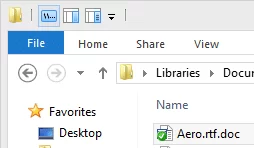Did you know that you can add your own commands to the toolbar at the top of Microsoft Office programs? This also applies to several apps in Windows 7, and has even been expanded to the File Explorer in Windows 8! Once a command is on your Quick Access toolbar, it’s easy to use with the mouse, and even faster to use with the keyboard if you know this well-kept secret: the icon’s position determines the shortcut. In my example in the tutorial below, my new button is the 4th from the left, which means I can trigger it anytime by typing Alt-4. As I show in the video, I use this so often that I forget that Alt-4 isn’t a standard shortcut when I use someone else’s computer.

Take a look at how to customize your toolbar below (spoiler, you can also just right-click any existing icon and ‘add to quick access’).
The important bit here is that this option — paste values only — is not available any other way by direct click. Without adding this command to your toolbar, you must either paste first, then adjust with the tooltip that appears (which can be a long operation for some large data sets), or use a three-click process through the ribbon. By using the Quick Access toolbar, you have a one-click shortcut and a keyboard command that’s as easy as ctrl-v paste. Since it’s my fourth icon, it’s now so instinctive for me to press alt-4 to paste values that I am thrown off when I sit at a new computer.
Going Further
Now build on this by using the Quick Access toolbar as a status indicator. Instantly tell if your list is filtered, if calculations are on, and more. Check it out in More Commands in the Quick Access Toolbar [Video].


Leave a Reply